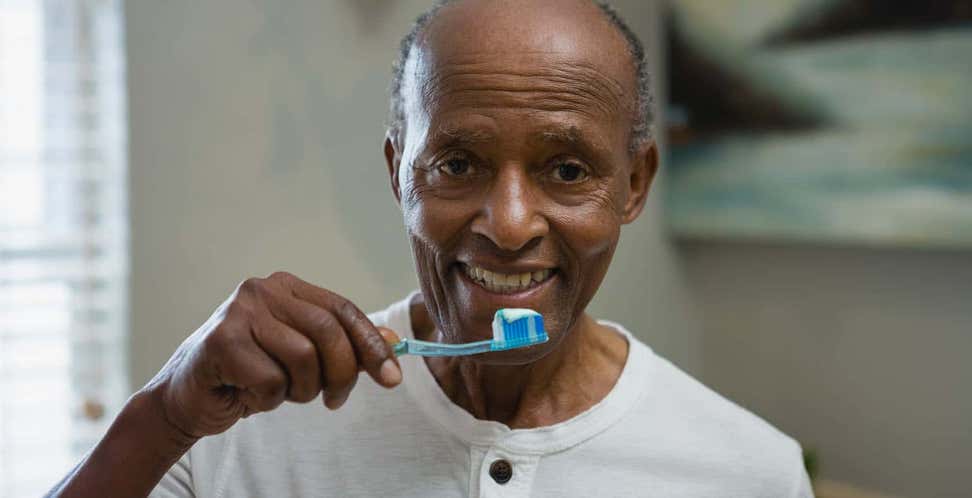Key Takeaways
Oral health is now recognized as an essential element of overall health in our rapidly growing older adult population.
Older adults with poor oral health are at increased risk for aspiration pneumonia, poorly controlled diabetes, endocarditis, and inadequate nutrition, among other systemic health problems.
Learn about the Gerontological Society of America's oral health initiative.
We know that a healthy mouth is not only important for basic comfort and appearance, but also for systemic health, nutrition, and social and psychological well-being.
In the aging process, tooth loss, gum disease, and other dental problems have historically been considered inevitable outcomes. But like many aspects of what people might consider “normal” aging, both tooth loss and poor oral health can be prevented. Prevention and patient education strategies — both for individuals and communities — are critical in oral health for older adults.
Older adults with poor oral health are at increased risk for aspiration pneumonia, poorly controlled diabetes, endocarditis, and inadequate nutrition, among other systemic health problems. Many medications commonly used by older adults also cause dry mouth, leading to tooth decay as well as impaired swallowing, speech, and taste. To maintain oral health, older adults need adequate daily oral hygiene and routine preventive visits with the dental team.
The Gerontological Society of America (GSA) recently launched an oral health initiative to strengthen the understanding, awareness, and importance of appropriate oral care and the impact that all members of the health care and caregiver teams — including dentistry, medicine, nursing, pharmacy, social work, occupational and physical therapy, and other professions — may have on ensuring good oral care for older adults. Family members and friends can contribute as well.
As part of this initiative, GSA developed two publications: Oral Health: An Essential Element of Healthy Aging, which provides evidence supporting the crucial links between oral health, systemic conditions, functional abilities, and healthy aging; and a white paper, Interprofessional Solutions for Improving Oral Health in Older Adults: Addressing Access Barriers, Creating Oral Health Champions — that makes six specific recommendations aimed at raising people’s quality of life as they age.
We also developed a webpage that features helpful resources related to oral health and older adults. All our materials are free to access. And if you have an interest in promoting oral health for older adults, we would be happy to provide you copies of our materials to distribute to your staff, constituency, clients, or at an upcoming conference.









